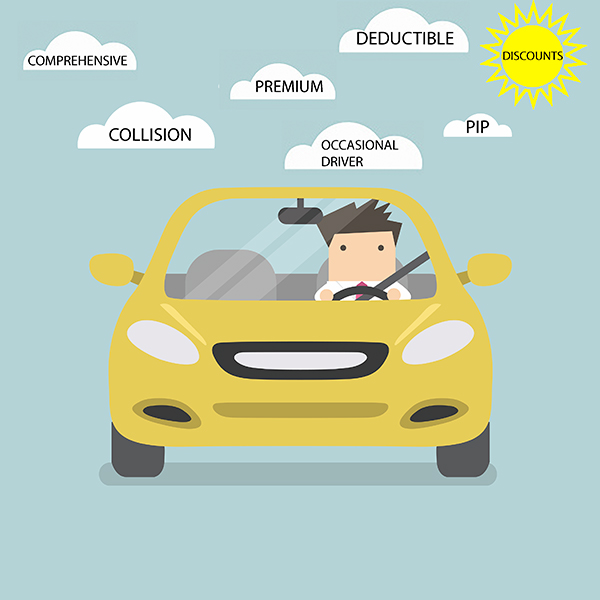You always hear that it’s best to make an informed decision. Well, that saying definitely applies to auto insurance. The only problem is that for someone who’s new to car insurance, or someone actually taking a good hard look at their insurance policy for once, all the new language makes it hard to decide on anything at all. What are these insurance agents saying?
We decided to create a sort of auto-glossary for you to make insurance shopping much easier. The following are commonly used terms and different types of coverage you’ll be considering when buying your car insurance:
- Collision Coverage: This coverage typically pays to fix your damaged vehicle or replace it if it’s been totaled (destroyed). The collision could be with another driver, a pole and sometimes an animal (but, more often, this is covered under comprehensive). Collision often covers hit-and-run accidents and damage caused by a non-insured driver, too.
- Comprehensive Coverage: This coverage pays for damages to your car that are not caused by a collision. This can include natural disasters, fire, theft, glass damage and vandalism. If you have already paid off your car, this coverage is optional. But, if something were to happen to your car, could you afford not having it?
- Deductible: This is the amount you have to pay out of pocket before your insurance kicks in. Usually, the higher your deductible the lower your payments, but that also means you pay more out of pocket if you have an accident.
- Discounts: Most insurance carriers have several discounts. The most common ones are for good students (B+ or higher), safe drivers (clean record), defensive driver (driving course required), occupation (certain careers are seen as low-risk), education (the higher the degree, the better) and low mileage.
- Liability Coverage: To be liable means to be responsible. This coverage takes care of the costs (within limits) of the other driver (bodily injury liability) and his/her property (property damage liability) in the case of an accident when the fault is yours. Most states require this form of coverage.
- Premium: This is the amount you pay on a regular basis. Your premium goes up and down depending on many factors but especially depending on how much your deductible is. If your deductible is very low, chances are your premium is pretty high.
- Personal Injury Protection (PIP): Regardless of who’s at fault in the accident, insurance typically pays, within limits, the medical, hospital, lost wages and funeral expenses of the insured person, the people in the insured vehicle and anyone struck by that vehicle. This coverage is only available in ‘no fault’ insurance states. Each state is different.
- Occasional Driver: This is someone who borrows your car sometimes. Some insurance carriers look at how often the other driver spends driving the car while others look at the amount of miles they drive. This person may or may not greatly affect your policy. For example, a teen occasional driver will raise rates whereas a roommate with a perfect driving record may not.
- Excluded Driver: You can list people as “excluded†on your policy for a variety of reasons. For instance, a teen who will raise your rates could be excluded by you, but in the event that he/she does borrow the car and has an accident, your insurance will not cover the damages.
- Quote: Each insurance company will offer you a different rate, even if it’s for the same exact coverage. Researching different policies’ limits, deductibles and premiums is complicated and time-consuming. AIS does all your comparing for you so all you have to do is choose the best quote that meets your needs.
If you’d like to learn more insurance lingo in your search for the right coverage, click here.
For a free quote, call AIS (855) 919-4247. Our customer service representatives will be happy to answer all your questions. Or, click here for a free online quote.


